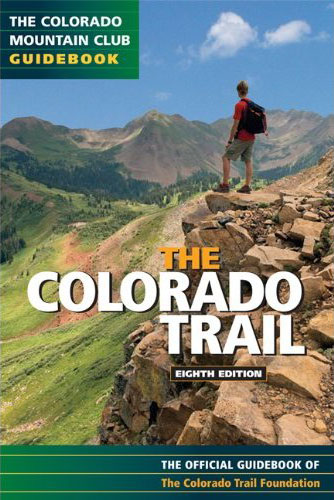HIGHLIGHTS: The Continental Divide Trail is a 3000 mile footpath that runs along the Rocky Mountain range from Mexico to Canada. The trail’s northern terminus is at the U.S.- Canadian border in Glacier National Park. The southern terminus is at the U.S.- Mexican border near Antelope Wells, New Mexico. The Continental Divide Trail (or CDT as it is often called) crosses 5 states, 25 national forests, 3 national parks, 3 Indian reservations, and many Bureau of Land Management and wilderness areas. It was officially designated by Congress as a National Scenic Trail in 1978, but currently is only 70% completed. Large segments of the CDT have yet to be planned, designated, or mapped (let alone constructed, marked or signed.). The CDT is was originally supported by the Continental Divide Trail Society which was founded in 1978 by Jim Wolf. In 1995, a new organization called the Continental Divide Trail Alliance was formed to aid the efforts of the CDT. The group’s mission is to unite the various CDT stakeholders and land management agencies to support the Continental Divide Trail. The The Continental Divide Trail Alliance (CDTA) is a 501-c(3) nonprofit organization with nearly 3,000 members working to increase public involvement, volunteer commitment and private sector support on the CDT. To date this grassroots movement has made a tremendous impact on the Trail. 9,500 CDTA volunteers have dedicated nearly $5 million of labor; Individuals, foundations and businesses have committed more than $14 million toward our efforts; and 2,050 miles of the CDT have been completed. The lead federal agency responsible in completing the CDT is the U.S. Forest Service (USFS) who works with the National Park Service (NPS), Bureau of Land Management (BLM), CDTS and CDTA to complete, maintain and manage the CDT. The CDTA lists the Continental Divide Trail route designated by the land agencies and not the Continental Divide Trail Society route which is shown here. Which ever route you choose, a thru-hike (or walking the entire length of the Continental Divide Trail in a single year) is a major undertaking. Only a handful of backpackers make the attempt annually, and only a few finish it the same year. Most thru-hikers start in early May from the southern terminus. The Rocky Mountain snowpack is light in some years, however, making start dates in April a possibility. Regardless, the problem for northbounders is the snow. In Colorado it lasts until late June, and in Glacier National Park it flies as early as September. Both thunderstorms and snow can occur anytime in the summer, so be aware that your hike can be brought to a halt by adverse weather conditions year-round in the Rockies. Typically thru-hikers arrive in Wyoming by August and finish the CDT in Alberta by October.
MORE DETAILS
|



Speak Your Mind